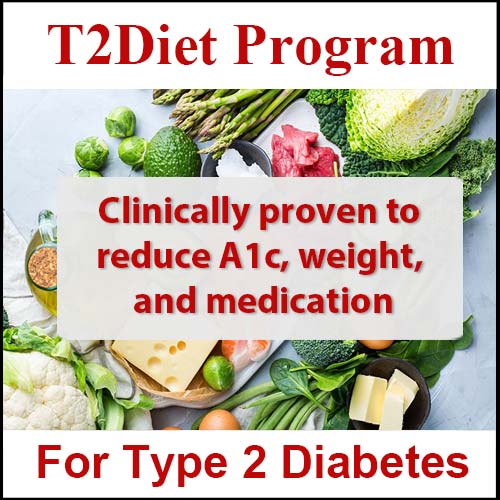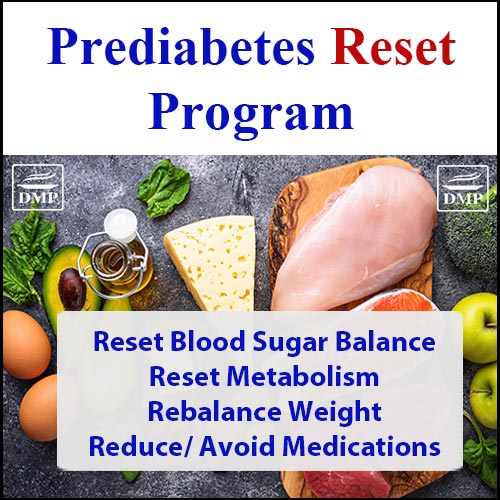Does an apple a day really keep the doctor away?
If you have type 2 diabetes or prediabetes, this old saying may actually be the opposite of the truth!
Keep reading to see which fruits are beneficial for people with diabetes and which ones to steer clear ofâ¦
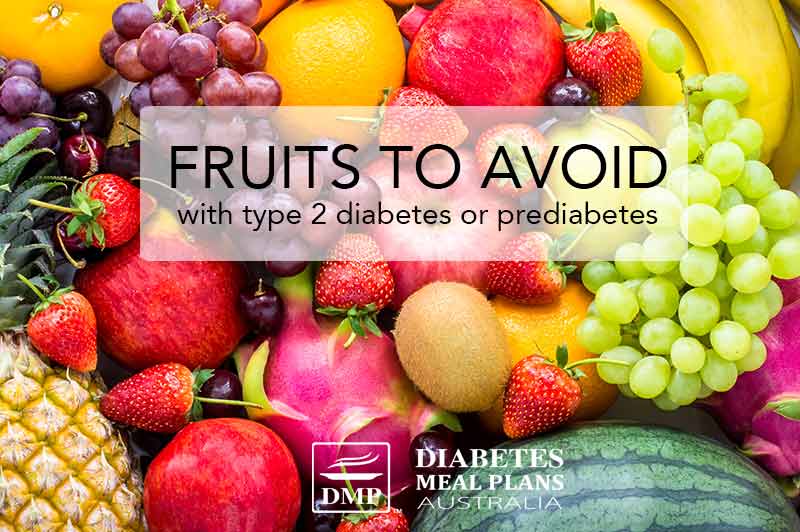
Fruit and Blood Sugar Control
People love fruit because of itâs sweet flavour, but that sweetness is a result of sugar/carbs, which can be a big problem when you are already struggling to control your blood sugar levels.
Just because fruit sugar is ânatural,â that doesnât mean it gets a free pass. In fact, fruit sugars can have the exact same effect on your blood sugar levels as other sugars can.
That isnât to say that a Snickers bar and an apple have the same nutritional value â clearly the apple is healthier overall, but your body doesnât distinguish between different types of sugar, so you still want to take it easy on the fruit.
In your bodyâs view of things, sugar is sugar! When it gets digested, your blood glucose levels can rise.
Some fruits are better for blood sugar regulation than others, and overall itâs always going to come down to small portions and moderation of your fruit intake.
High Carb Fruits to Avoid
High carb fruits are naturally packed with sugar and they tend to have a worse sugar-to-fibre ratio than other fruits.
Here are a few of the highest carb fruits:
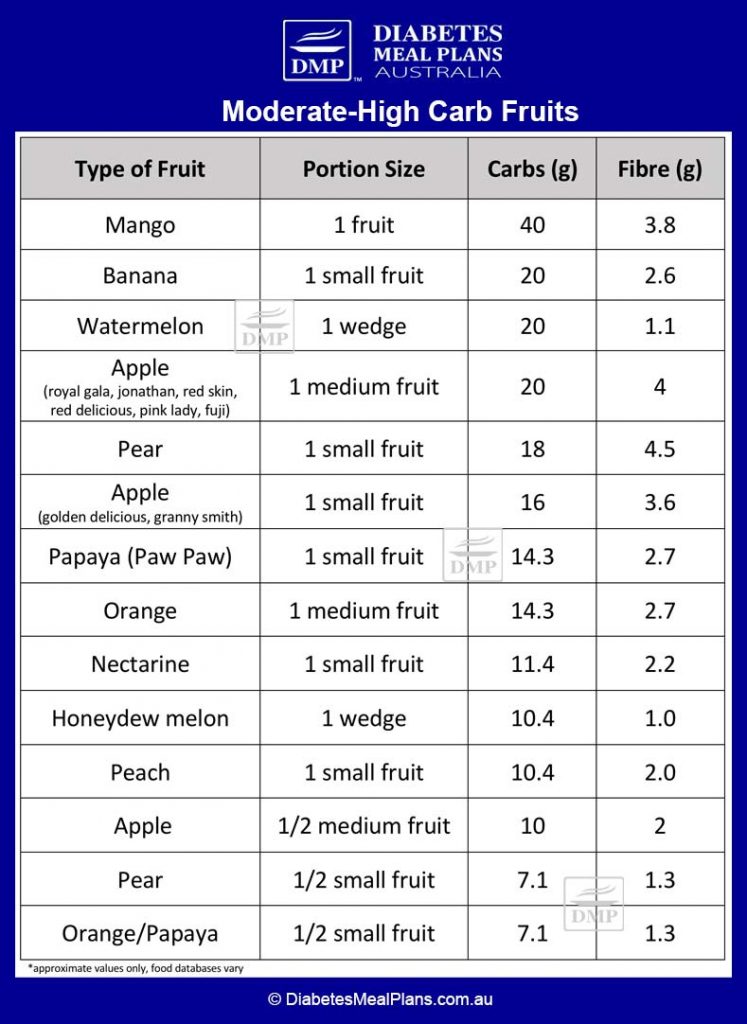
As you may be able to see from the chart above, super-sweet fruits like mangos, watermelon, bananas, apples, pears, papayas, and orange are not really a good choice for blood sugar control, as they are higher in carbs compared to other options.
Moderate fruits are nectarine, honeydew melon, peach, and of course, you can consume smaller portions of fruits to cut the amount of carbs. Even so, many will find it more difficult to regulate blood sugar levels when including the above fruits.
What About Dried Fruit and Diabetes?
Unfortunately dried fruit is not your friend.
Dried fruit is really like a condensed form of sugar and therefore they are best avoided.
Dried fig (1): 10.4g carbs, 2.7g fibre, 10g sugar
Dried prunes (1): 5.3g carbs, 0.6g fibre, sugar 3.3g
Dried apricot (1): 3.8g carbs, 0.7 fibre, sugar 3.2g
Raisins (mini box): 27.5g carbs, 1.1g fibre, sugar 26.8g
Sultana (mini box): 24.3g carbs, 1.3g fibre, sugar 23.6g
Dried cranberries (1 Tbsp):5.6g carbs, 0.3g fibre, sugar 4.4g
Dried dates (1): 3.4g carbs, 0.5g fibre, sugar 3.3g
Dried apple (1 ring): 4.2g carbs, 0.6g fibre, sugar 3.6g
Dried pear (1 half):12.5g carbs, 1.4g fibre, sugar 11.2g
Dried peach (1 half): 7.9g carbs, 1.1g fibre, sugar 5.4g
As you can see by the list, dried fruits stack up carbs/sugars pretty fast. While some of them seem lower in carbs (apricot, dates, apple and prunes), they arenât usually eaten one at a time, so having a few can load up the carb count quickly.
Can You Eat Fruit When You Have Type 2 Diabetes or Prediabetes?
Yes, you can still have fruit, just follow the below recommendations and your blood sugar levels will behave a lot better.
Stick to fruits in the lower carb category (in the chart below) most often, and if you really love your fruit, enjoy moderate carb fruit on occasion.
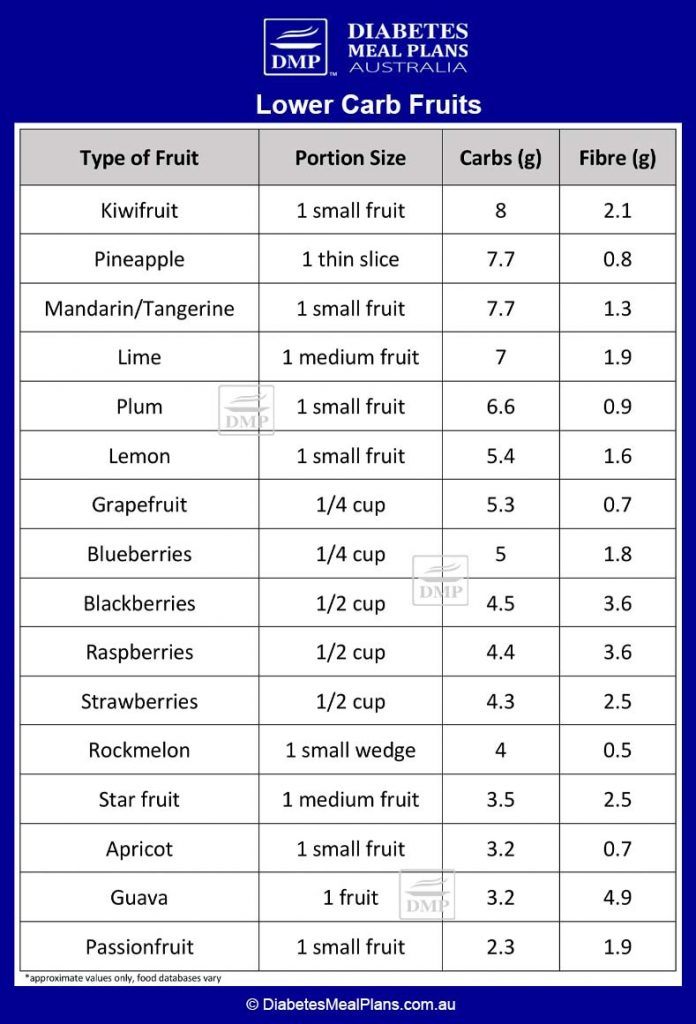
Final Fruit Tips
For best results be sure to limit your overall fruit intake to just one serving of fruit per day, or a very maximum of two on the occasion. You will find this will lead to better blood sugar and HbA1c results.
One other tip: eat your fruit with a source of protein or fat, this helps slow down the release of glucose into the bloodstream. For example, berries with yoghurt or a small handful of nuts, a peach with cottage cheese, or strawberries with cheddar cheese.

